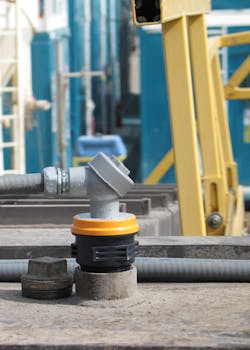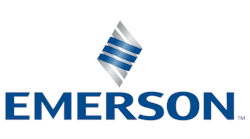Q: How has level measurement technology evolved over the past 10-15 years? How are the level measurement solutions of today better than the level measurement solutions of yesterday?
A: The base technologies that exist today to measure level also existed 10 to 15 years ago. The advances have come in making these technologies much more reliable.
With advances in materials, electronics, and manufacturing methods, products survive better in harsh environments and are easier to install. Powerful, low-cost microcontrollers and other configurable electronic components allow sensors to adapt to the environment in which they are operating for more reliable operation
Q: What are some common application issues end-users can more adeptly address with modern-day level measurement technology than they could with previous generations of level measurement systems?
A: There are several. First, filtering options are much improved over the sensors offered in earlier years. This allows the sensor to be programmed to avoid known obstacles. Level sensors are also made using materials that have better chemical compatibility. In addition, sensors offer better protection against electrical interference (i.e. voltage spikes, fast transients, and radiated interference).
Sensors have also benefited from the expansion of communications to the masses, especially via cellular technology and the Internet. Remote access to level information is now affordable. In the past, level readings were only available on-site (unless you had deep pockets). It didn’t make sense to spend money on level sensors when the people who would benefit most wouldn’t have easy access to the data.
Q: What are some of the general features end-users should be evaluating when specifying a new level-measurement solution for a given application? Why are such features important to consider?
A: Depending on your application, there are many features that can be considered. However, some features are more important than others. Vital features include sensor capabilities such as sensor range, mounting options, chemical compatibility, and operating temperature range. These features will determine if the sensor is capable of working in the measurement environment.
Additionally, certifications and approvals may also play an important factor, such as CSA for hazardous locations, or 3A for the food and beverage industry.
Others of vital importance are sensor output, to verify proper performance with a control system; repeatability and accuracy, to ensure reliable data within the acceptable error band; and signal conditioning, for harsh, cumbersome, or noisy environments.
Q: When specifying, installing and/or maintaining modern-day level measurement technology for a given application, what are some common pitfalls users should be wary of?
A: The most common mistake is choosing a sensor without understanding the limitations and drawbacks of that technology. All of the sensing technologies have areas where they shine and areas where they fail miserably. The limitations and strengths of the technology need to be weighed against the parameters of the application:
-
What is the material to measure?
-
Is the sensor material compatible with this material?
-
Does the method need to be point level or continuous?
-
Where will the sensor be mounted?
-
What is the sensing range?
-
Does the material in the tank coat or build up on surfaces?
-
Do turbulence, foam, or vapor occur at the surface of the liquid?
-
Is the material to be measured electrically conductive?
-
What are the application temperatures?
-
Does the specific gravity of the liquid change with temperature or time?
-
What type of output or interface is needed?
Once you have answered these questions, look at the technology that has been most successful in similar applications. Finally, look at long-term costs and opportunities for return on investment. You may actually save money by using a higher performance sensor that can result in energy savings or improved workflow.
Q: Are there any common problem areas you see end-users running into when it comes to level measurement in the areas of specification, installation and/or maintenance?
A: Using improper wiring methods, such as routing low-power DC cables next to high-power AC cables, or failing to use properly shielded cables. Mounting mistakes are also fairly common and can cause poor sensor performance.
Q: In your experience, what are some typical causes of poor level measurement performance? How can users best avoid such problems in their level measurement applications?
A: Again, mounting the sensor properly (keeping sensor perpendicular to target, proper position in tank, and removing obstacles in detection path) is essential for high performance. Also, proper cable selection, routing cables away from sources of high voltage, and the use of proper electrical grounds will reduce electrical interference.
In addition to a good installation, if the sensor is not right for the application, it will never perform to the level it needs to. Failing to weigh all the factors in the application against the different technologies being considered is setting the application up for disaster. The user should take the time to discuss the details with an application engineer before purchasing a sensor.
In some applications, where multiple sensors are going to be used, it is a good idea to buy a test unit to evaluate the sensor in the application. This can save thousands of dollars if the sensor is not a good fit.
Q: In terms of new capability, how will level measurement technology improve over the next 10-15 years?
A: Materials will continue to improve, which will provide better chemical compatibility at more affordable prices.
Signal processing will also continue to improve so more information will be available from a single sensor.
Digital interfaces will replace analog interfaces. This provides a method of obtaining more information from a single sensor. A good example of this is one of our level probes that measures oil and water interface in oil storage tanks. The digital signal gives us an oil level reading, a water level reading, and a temperature reading all from a single probe.
Q: How will the level measurement systems of tomorrow be better than the level measurement systems of today?
A: Lower power and more real-time data will be available with advances in sensor interface. A single sensor will be better able to give more information about an application. Accuracy and repeatability will also continue to improve.
Wireless sensor interfaces will increase over the coming years, providing cost savings in the area of installation costs.
www.apgsensors.com



